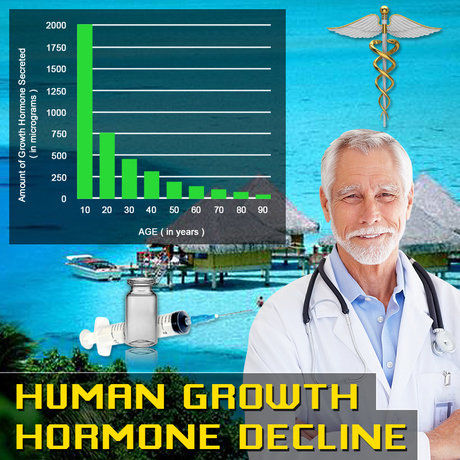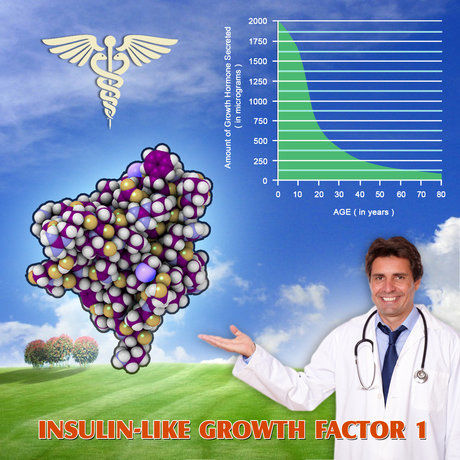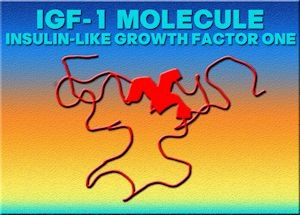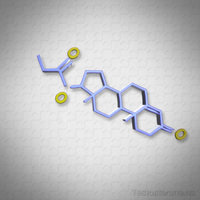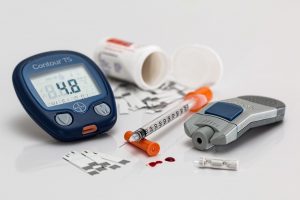
If you've been on our website for any length of time, you've probably realized that we believe in the effectiveness and safety of sermorelin acetate injections for the treatment of somatopause. It is a great choice for any patient looking to resolve the life-altering symptoms of adult-onset growth hormone deficiency.
Even though we endorse and prescribe our patients with sermorelin acetate injections, it is imperative to understand that no medical treatment exists that does not come with risks and potential side effects. This is because the human body is just so complex, we cannot possibly know what every drug or chemical we put into it will do to each individual person -- but we can made educated guesses based off of scientific research and drug research trials, of course!
Therefore, the same is true with sermorelin acetate injections. Most of our patients have almost zero issues with the medication and experience nominal side effects. Almost none of them find themselves experiencing side effects that cause them to temporarily defer or stop treatment, either.
Video Link: https://vimeo.com/289670548
Video Download: Side Effects Of Sermorelin You May Experience After Injection
Video Stream: Side Effects Of Sermorelin You May Experience After Injection
Our goal here is to let you know about some of the symptoms and side effects you should pay attention to if you decide to take sermorelin acetate injections, especially when you first begin. Here, we will focus on side effects resulting from the injection itself but we will also discuss other problems associated with the use of sermorelin and what can happen if you abuse the hormone.
Can You Overdose on Sermorelin Acetate?
In general, sermorelin acetate injections are safer and you are less likely to experience overdose with sermorelin as compared to bio-identical HGH injections.  When Human Growth Hormone is injected into the human body, the liver will process all of the HGH as soon as it can.
When Human Growth Hormone is injected into the human body, the liver will process all of the HGH as soon as it can.
Lets look at what is happening in the body when growth hormone is released into the bloodstream. We usually think of HGH acting directly on our muscles and organs, but in reality, most of the HGH is metabolized by the liver. The liver converts growth hormone into growth factors, such as IGF-1 (insulin-like growth factor-1) and this growth factor is what interacts with various cells around the body, organs and tissues.
Our bodies do not have a mechanism in place that can slow down how quickly HGH is metabolized by the liver. If HGH is there, the liver is breaking it down.
On the other hand, our bodies do have a mechanism in place to slow down the rate of metabolism of growth hormone-releasing hormone (GH-RH). GH-RH is what stimulates the pituitary gland to produce growth hormone and sermorelin acetate is a chemical derivative of GH-RH. If the body senses that there is too much GH-RH (or sermorelin acetate) a molecule called somatostain is released by the brain, slowing down the rate at which the pituitary is acted upon by GH-RH (or sermorelin).
Even though sermorelin acetate is a safer alternative and there are mechanisms in place to slow down the production of HGH if necessary, the abuse of the hormone can still lead to problems. As of now, endocrinologists typically deem 220 ng/dL to 270 ng/dL as the standard and healthy range of IGF-1 levels in the bloodstream.
We test for the levels of IGF-1 instead of HGH in the blood because IGF-1, as mentioned previously, is a growth factor produced by the liver when stimulated by growth hormone. Natural growth hormone production in the human body occurs in pulses and HGH is metabolized too quickly to be accurately measured in the blood. This is why we rely on IGF-1 levels to determine healthy growth hormone production.
If levels of IGF-1 are found to be above 280-290 ng/dL consistently in a patient, then there are serious concerns about potential side effects occurring. However, when HGH or sermorelin acetate injections are used under the supervision and direction of a qualified endocrinologist, then the risk of overdose or side effects is greatly minimized.
Most endocrinologists and physicians aim for 250 ng/dL as the ideal level of IGF-1 in the bloodstream when treating men or women with adult-onset growth hormone deficiency. This is in the middle of the ideal range and therefore, less risk of going too high or too low.
Did Sermorelin Give Me the Flu?
One symptom to be on the lookout for is feeling like you have the flu. This is a sign that your  body is responding poorly to elevated HGH Levels, and you should inform your prescribing physician as soon as possible.
body is responding poorly to elevated HGH Levels, and you should inform your prescribing physician as soon as possible.
Other issues that can arise usually come about when sermorelin acetate injections are abused. With too much GH-RH (or sermorelin acetate), levels of somatostatins can rise dramatically. This can hinder your ability to naturally produce growth hormone, even when sermorelin acetate hormone therapy has stopped.
However, somatostatins are not the bad guys here and are what make sermorelin acetate so much safer. They prevent you from experiencing an overdose of HGH. Because sermorelin acetate is functionally identical to growth hormone-releasing hormone, allergic reactions to the hormone are very uncommon.
Injection Site Side Effects
Most of the side effects reported by patients deal with the injection site itself. Approximately 10% of our patients see irritation at the injection site, including redness, itchy skin and sometimes swelling. If you are new to administering injections yourself, you may see some bruising until you get the hang of it.

Injections of both HGH and sermorelin are called subcutaneous injections, meaning they are delivered just beneath the skin, not intramuscularly like testosterone. The needle is very, causing little to no pain to our patients.
From a survey of our patients, 10% of them saw injection site side effects, but only 1% of these patients decided to stop sermorelin therapy because of it.
To fix this problem of injection site irritation, the best way to go about it is to change your injection sites with each injection. You can go back to a previously-used area of the skin but just rotate them regularly. This method will give your skin a break and minimize any irritation.
Other Symptoms of Sermorelin Acetate Injection
Now, lets look at other symptoms to look out for beyond the area of the injection site.
These symptoms will be the result of increased levels of growth hormone and insulin-like growth factor-1 in the bloodstream. The good news is that the symptoms described will usually go away once the body acclimates. However, as a patient, you should always report any and all side effects to your physician, especially if you feel they are moderate to severe in nature. These symptoms include: light-headedness, rashes, tingling in the neck, headaches, hyperactivity, drowsiness and dysphagia (difficulty swallowing).
 Beyond these symptoms that you may experience, there are further issues that are rarer, including tightness of the chest muscles, urge to vomit, and nausea.
Beyond these symptoms that you may experience, there are further issues that are rarer, including tightness of the chest muscles, urge to vomit, and nausea.
If you're on a sermorelin acetate therapy program, make sure to keep an eye out for these symptoms and report them to your doctor if you experience any of them. If you are interested in a sermorelin acetate therapy program, do not hesitate to call us or fill out our contact form for a free consultation and to get your questions answered.
Contact Us For A Fast And Professional Response

- Sermorelin Acetate Side Effects [Last Updated On: February 12th, 2025] [Originally Added On: September 13th, 2020]
- What Is Sermorelin Therapy? Frequently Asked Questions [Last Updated On: February 12th, 2025] [Originally Added On: October 15th, 2020]
- Injectable Sermorelin with GHRP-6 for Men [Last Updated On: April 26th, 2025] [Originally Added On: November 2nd, 2020]
- FAQ Sermorelin and Wikipedia About Sermorelin: What are Sermorelin Acetate Injections? [Last Updated On: February 17th, 2025] [Originally Added On: November 3rd, 2020]
- Sermorelin Acetate Information [Last Updated On: May 30th, 2025] [Originally Added On: November 6th, 2020]
- Sermorelin Side Effects Explained [Last Updated On: February 10th, 2025] [Originally Added On: November 17th, 2020]
- HGH Side Effects: Risks and Dangers of Growth Hormone Therapy [Last Updated On: February 11th, 2025] [Originally Added On: November 19th, 2020]
- Ipamorelin Therapy for Human Growth Hormone Deficiency [Last Updated On: April 22nd, 2025] [Originally Added On: November 24th, 2020]
- Improve Body Composition with Sermorelin Acetate [Last Updated On: June 12th, 2025] [Originally Added On: December 26th, 2020]
- How Can Sermorelin Help With Weight Loss ? [Last Updated On: April 8th, 2025] [Originally Added On: January 13th, 2021]
- What are the Benefits of Injectable Sermorelin Acetate? [Last Updated On: June 11th, 2025] [Originally Added On: January 20th, 2021]
- Buy Sermorelin Acetate Injections From a USA Clinic: HGH, testosterone, Sermorelin, HRT (Hormone replacement therapy) [Last Updated On: September 8th, 2025] [Originally Added On: February 8th, 2021]
- Sermorelin Therapy 21st Century Injectable Human Growth Hormone Restoration [Last Updated On: May 25th, 2025] [Originally Added On: February 16th, 2021]
- How Much Does Sermorelin Acetate Cost and How Does It Compare to HGH Therapy? [Last Updated On: April 11th, 2025] [Originally Added On: May 3rd, 2021]
- Buy Sermorelin -- What to do When Sermorelin Arrives in the Postal Mail [Last Updated On: February 16th, 2025] [Originally Added On: May 9th, 2021]
- The Importance of IGF-1 — Boosting IGF-1 Levels with Sermorelin and Prescription HGH [Last Updated On: September 19th, 2025] [Originally Added On: May 14th, 2021]
- Age Management with Sermorelin Injection Treatment [Last Updated On: March 7th, 2025] [Originally Added On: May 23rd, 2021]
- Sermorelin Acetate FAQ and Wiki Guide [Last Updated On: May 28th, 2025] [Originally Added On: May 25th, 2021]
- Buy Sermorelin: How Can I Legitimately Get a Sermorelin Prescription? [Last Updated On: August 31st, 2025] [Originally Added On: May 30th, 2021]
- Sermorelin Growth Hormone Releasing Hormone Analog [Last Updated On: January 18th, 2025] [Originally Added On: March 10th, 2022]
- Anti-Aging Benefits from Hormone Balance [Last Updated On: January 18th, 2025] [Originally Added On: March 22nd, 2022]
- How Can I Decide Between Sermorelin and HGH Injections? [Last Updated On: September 29th, 2025] [Originally Added On: January 25th, 2023]
- The Missing Vials Mystery [Last Updated On: March 31st, 2025] [Originally Added On: August 23rd, 2023]
- Gain Muscle and Improve Bodybuilding Results with Sermorelin Acetate Injections [Last Updated On: September 2nd, 2025] [Originally Added On: March 9th, 2024]

